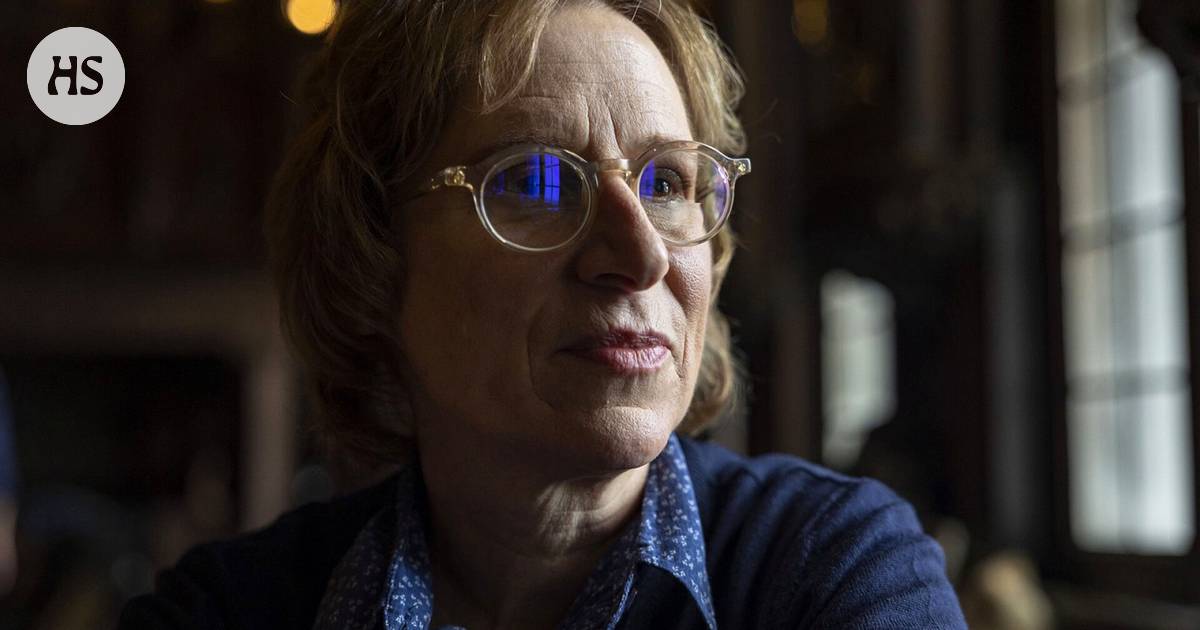Showing Up is an exceptional artist description because it presents creation not as a mystical inspiration but as a dune that eats up resources.
“Please, don’t quote that interview! I don’t know why he said that, but it haunts me,” says Kelly Reichardt with an annoyed smile on her face.
The director gives an interview via Zoom from his home in Portland. I have just referred to his acting credits by Michelle Williams For an interview with Variety. In it, Williams said that despite the honor he received, Reichardt has to teach filmmaking as a job in order to get health insurance. The director has been teaching at Bard College art school since 2006.
Praise and honor have really come. Kelly Reichardt has been called the silent master of American cinema. His small and contemplative films are screened at major film festivals and feature Hollywood names About Kristen Stewart To Jesse Eisenberg. Williams has worked with Reichardt four times already.
Kelly Reichardt and her co-star Michelle Williams at the Cannes Film Festival in May.
Reichardt says that he has always done and will always do different jobs, and that is not a problem.
“The years at Bard have pushed me forward. With teaching, I have conversations about films that I wouldn’t have anywhere else.”
But it’s true that you don’t get rich with movies like this.
Showing Upin the main character Lizzy tries to focus on her art, but everyday life gets in the way. No hot water from the shower, brother with mental health problems (John Magaro) needs help and office work for mother (Maryann Plunkett) at the art school run take time.
As an artist’s rendering Showing Up is exceptional because its main character is not a human monster who gives his all to art, and it does not present creation as mystically inspired but as a dune that eats up resources. For Lizzy, the resources are hot water, money and, above all, time.
“Time is of the essence. Time is everything,” says Reichardt.
She doesn’t feel she’s Lizzy, but they’re the same. Both make small works, often about women, and earn their living with other things.
Michelle Williams plays Lizzy, a sculptor preparing for an exhibition.
Reichardtin A debut film with a DIY spirit River of Grass (1994) was once selected for the Sundance Film Festival. The critics praised it, but after the festival run it got quiet. For the next decade, Reichardt tried to start film projects, directed a couple of short films, did odd jobs and spent the night on friends’ sofas.
Then Reichardt felt the limitation of time deep inside.
“When I wasn’t getting the movies done, I was very conscious of every year that went by,” he says.
Second movie Old Joy graduated in 2006 with a $30,000 inheritance from an aunt. The producer was an arthouse director Todd Hayneswith whom Reichardt had become friends.
An intimate treatise on time, life choices and male friendship was the director’s breakthrough. Since then, Reichardt has been able to film every 2–3 years. Budgets have been in the hundreds of thousands, at best maybe a couple of million dollars. For comparison Barbie’s the budget was 145 million.
“I don’t have a big agenda that I want to achieve before I die. I’ve been able to express myself. I like to work, I like routines.”
From flat despite the pace of work, Reichardt does not trust that the work will continue. Art cinema is in an age-old crisis.
“Films are expensive. Matalink’s budget is a lot of someone’s money. And no matter how tight your belt is, the distributor still has to spend money so that anyone knows the film exists.”
For four months, there has been nothing but talk in the cultural field Barber and Of Oppenheimer, the director updates. He is surprised that hardly anyone seems to criticize the way in which mega-movies have dominated both the conversation and the screens.
“They are part of a huge marketing machine, but they are sold as art. And all this is just celebrated. As a filmmaker, I wonder what this does to people’s expectations for future films.”
Viewers haven’t returned to theaters since the corona virus, and Barbie’s success isn’t trickling down to art films. Reichardt makes his films for the big screen, but none of them have made even two million in theaters.
“If you make movies about stolen milk [First Cow] or from a bird that has hurt its wings [Showing Up]you can’t take it for granted that money will appear from somewhere.”
Are talked about boring things, money and business in the interview. Finally, I want to ask Reichardt about animals.
Animals play many roles in his films. They are man’s friends, like Old Joyssa and Wendy and Lucyssain which Reichardt’s late dog Lucy plays, but also working animals, as in the anti-western film Meek’s Cutoff (2010). First Cow’ssa the cow represents the budding livestock industry that will transform it from a living being into a meat resource.
Showing Upissa Lizzy’s cat attacks the pigeon, and the artist ends up tending to the bird that injured its wing.
“With the help of animals, I can tell things about the characters without dialogue. People relate to animals differently than to people,” explains Reichardt.
An animal-loving author also influences the use of animals Jonathan Raymond, with whom Reichardt writes almost all of his films. Raymond’s experiences were born Showing Upin joke, and Raymond always has a cat on his lap, according to Reichardt.
Working with animals is not easy. Showing Upissa several pigeons were used: one could fly, another could land, the third could be held. Ricky the cat was played by two cats.
“All animals change the way you shoot. They rule the shots.”
Showing Up will be seen at the Rakkautat & Anarkiaa festival on September 16, 18 and 24. In addition, Kino Regina will screen all of Reichardt’s previous films in October–November.
